Flow State
Penn State’s iconic fly-fishing program, like the sport itself, is evolving to adapt to new philosophies and new audiences. In George Daniel, the program has a leader born to the role.
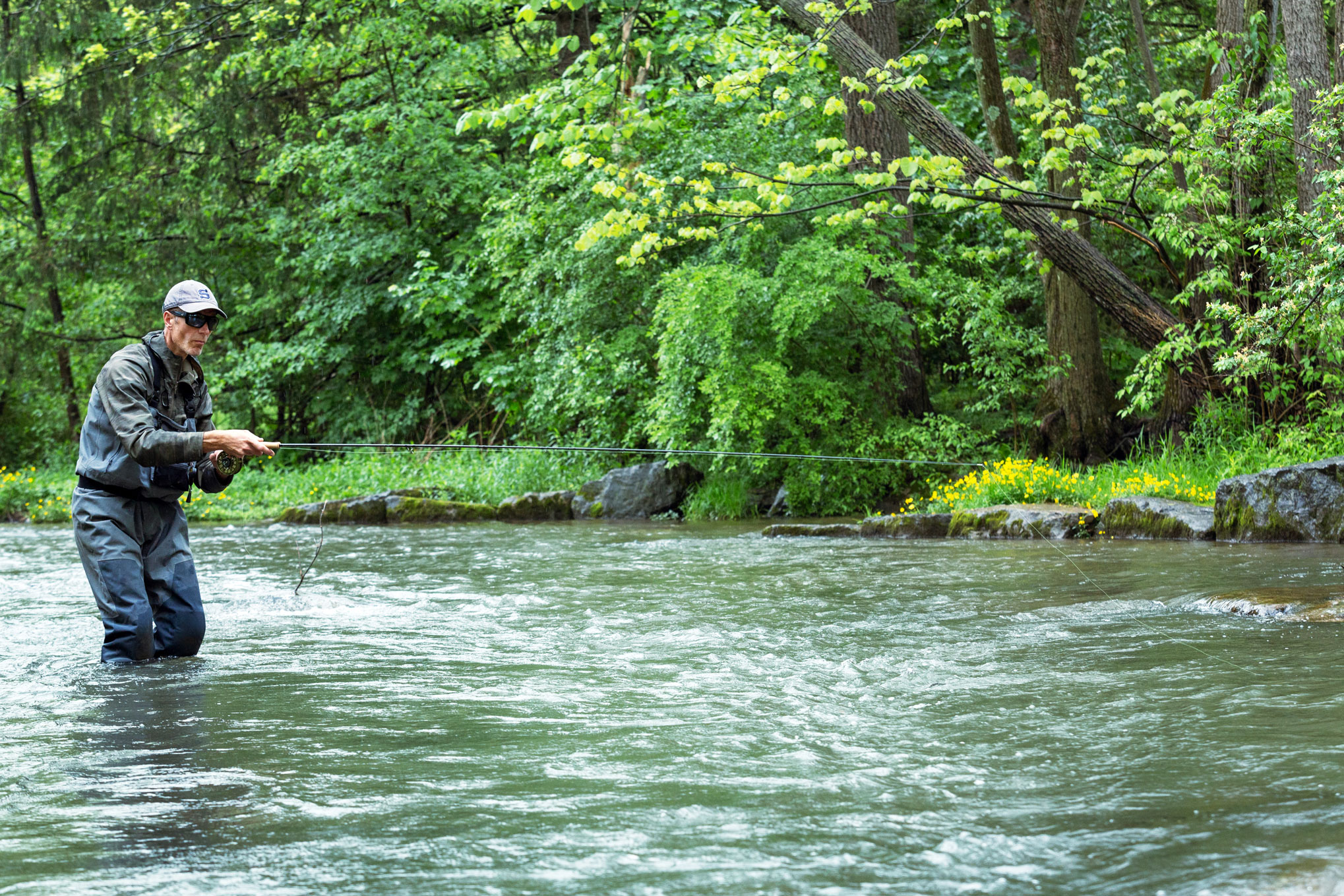
If you see a fly-fisherman plying the waters around State College, the odds are decent on any given day that it’s George Daniel. He fishes every day. He might be fishing with a class, his family, or private clients. He might be out shooting photos, gathering material for books and articles. If he’s not on the water, you might run into him in Rec Hall, on the way to or from class, or tying flies in the classroom.
One week last November, Daniel, lead instructor and director of the Joe Humphreys Fly Fishing Program, was omnipresent in and among angling happening around University Park: guiding a group of students from the beginner class at nearby Fisherman’s Paradise, leading a classroom presentation for the advanced section on fishing for tiger muskellunge (“toothy critters” in the syllabus), and presenting at the Spring Creek Trout Unlimited chapter’s monthly meeting.
Since Daniel, 46, took the reins of Penn State’s storied fly-fishing program in 2019, he has continued to expand its reach and focus. He’s got massive wading boots to fill, of the legendary anglers who have led the program, including its namesake. He also has the challenge of introducing the sport to a digital-first generation, and helping students develop the tools needed to share in the sport’s many benefits.
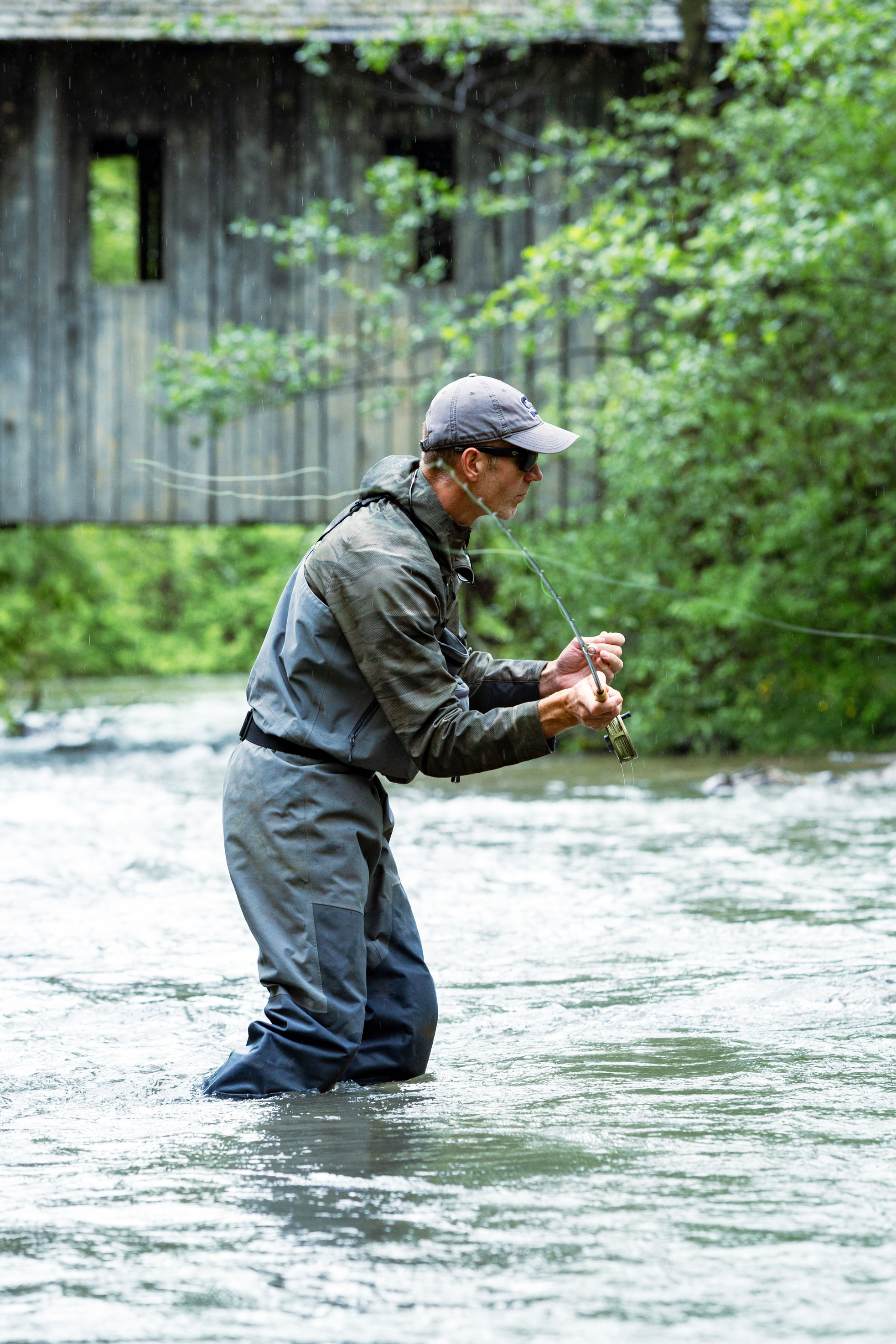
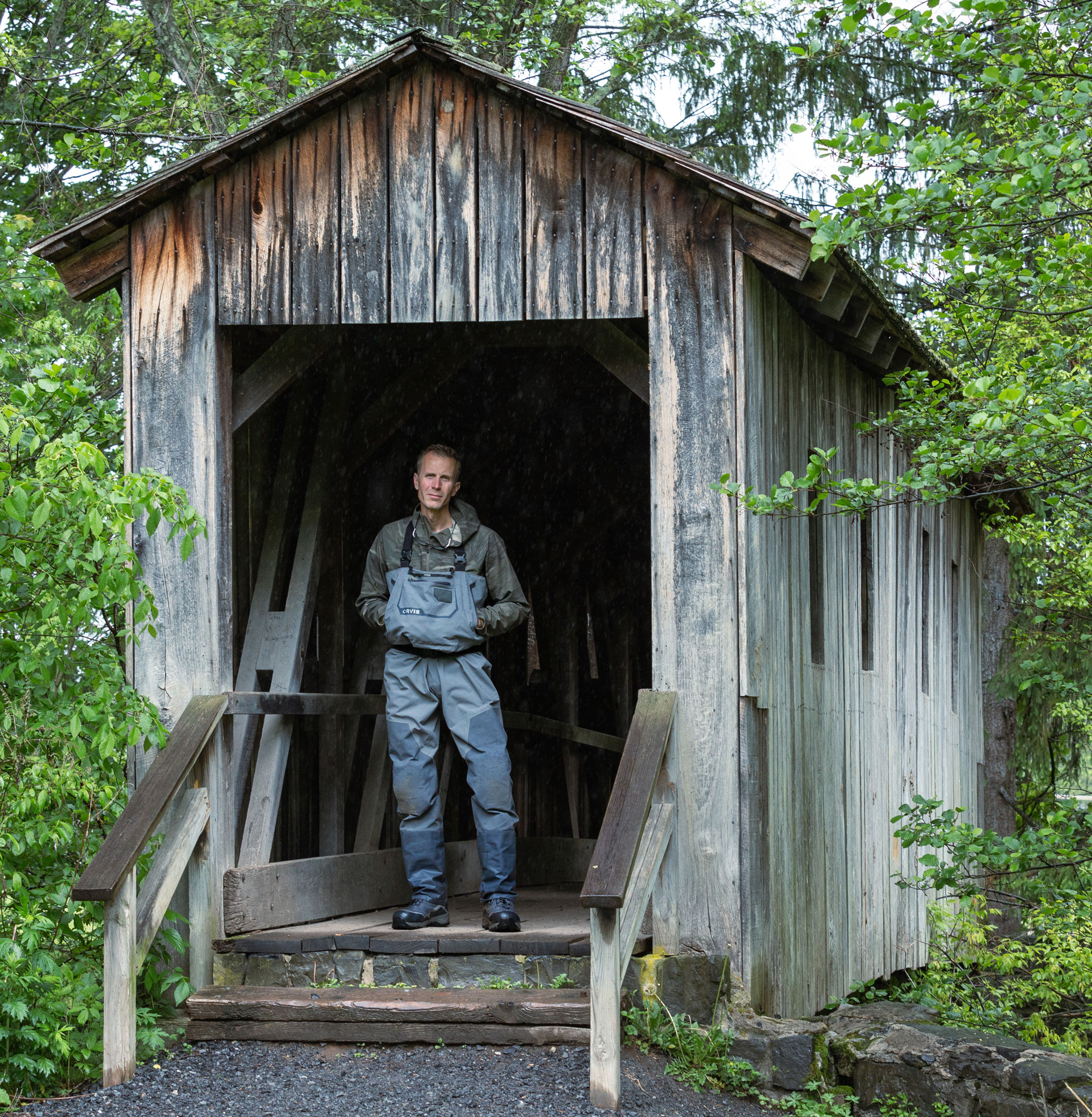
Growing up about two hours north of State College in tiny Germania, Pa., with a dad generous enough to furnish him with a rod but not patient enough to teach him, young George was responsible for his own education. He stalked brook trout in the kids-only stretch of the Germania Branch of Kettle Creek that runs through town. Barely two fly rods wide, the stream became his first laboratory. After learning those waters, Daniel sought fishing knowledge wherever he could find it: books on tactics, mentorship, and new rivers further afield.
A Christmas present from his mother led to George’s next evolution: Joe Humphreys’s Trout Tactics. “The moment I read that someone made a living teaching fly-fishing, that’s what I wanted to do,” Daniel says. “It was a long shot. A lot of people made fun of me. But at 13, I said, ‘This is what I’m doing. I’m going to get into fishing. I’m going to do this full time. And hopefully, eventually, I’m going to teach at Penn State.’”
The unique limestone-based geology of central Pennsylvania has grown an extensive world-class trout fishery. Deep aquifers push cold, fresh water through springs into streams. Pure water in turn nurtures a plethora of aquatic insects, which help hungry trout grow into burly competitors. “Put a pin on State College and then go in a 50- to 60-mile radius, and you could probably never fish all that water in your entire life,” Daniel says. “We have this supercharged fishery. There’s just so much abundance.”
The Penn State program is famous not only as the first accredited university fly-fishing course, but also because of the legendary anglers who have led it. The first was George Harvey ’35 Agr, a vaunted track athlete as an undergrad who established the program in the 1930s. (It was first offered as a credited class in 1947.) Over four decades, Harvey—widely known as the dean of American fly-fishing—instructed over 35,000 students, wrote books, and modernized aspects of the sport related to fly design, tackle rigging, and more. One of those students was Joe Humphreys ’57 H&HD, ’63 MEd Edu, a champion boxer and wrestler who had been fishing around State College since he was a boy. Humphreys and Harvey had encountered each other fishing on Spring Creek a few miles from campus. After a stint in the Navy, Humphreys enrolled at Penn State, taking Harvey’s class in 1954. Once Harvey saw his acumen, on-stream advice turned into partnership; Harvey eventually chose Humphreys as his successor when he retired in 1972.
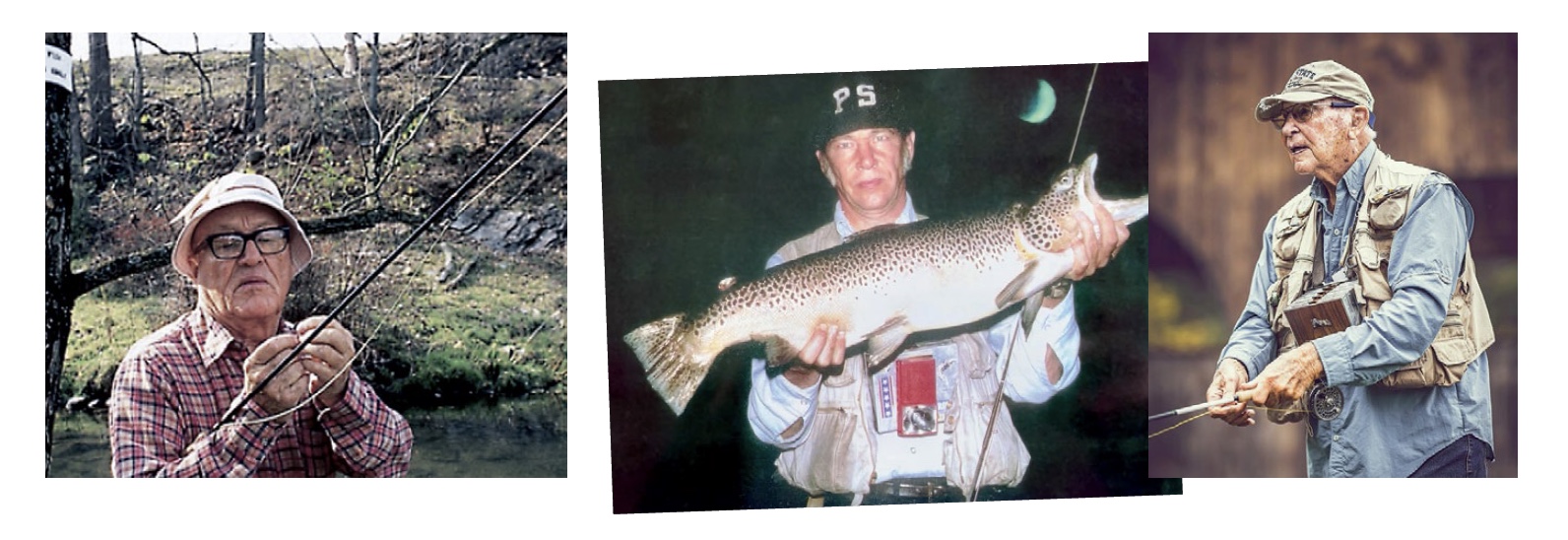
Humphreys, too, made an indelible mark on American angling with his teaching, writing, and advocacy. (The 2018 documentary Live The Stream tells the story of his boundless energy and drive.) After Humphreys retired in 1989, other instructors and directors stepped in to steward the program, including former faculty members Mark Belden ’72, ’81 MS H&HD and the late Greg Hoover ’77 Agr. In Daniel, the program appears to have another long-term leader committed to maintaining its iconic status.
“This is famous within our field,” says John Bartholomew, head of the kinesiology department. “It’s the strongest and most prestigious fly-fishing class and program that exists.”
When he was 14, Daniel’s family relocated to Lock Haven, bringing him closer to Humphreys’ territory. He continued to execute his plan. At a book signing in a local fly shop, Daniel, despite already owning a copy of Trout Tactics, bought another, and, as Humphreys signed it, set the hook. He asked Humphreys to go fishing. Humphreys agreed.
“He took me under his wing when I was 16,” Daniel says. “Joe said, ‘You need to finish college,’ which I did. He said, ‘You need to do a graduate degree,’ so I did my graduate work.” Daniel earned his undergraduate degree at Lock Haven University while he paid his fly-fishing dues. He pursued writing assignments and presentations, things he knew he’d have to master in order to teach others.
Teaching the actual fishing came easily; it was an undergrad public speaking course that showed him he had more to learn. “I was an incredibly shy guy,” he says. “I’m still kind of a recluse when it comes to people.” Fear of presenting to his class led to sleepless nights; for years after, he gave free talks to fishing clubs, to senior citizen centers, “anyone within a four-hour radius that would accept me,” he says.
Humphreys and Daniel cut very different profiles. The former exudes a pugnacious swagger; even in his tenth decade, he’s still every ounce the boxer and wrestling champ he once was. Guiding other anglers, he is poised and anticipating, the coach in the corner urging an athlete forward. Daniel, by contrast, embodies flexibility. He’s long and lean, all wingspan and hands, watching, asking questions, suggesting, inserting his wisdom with subtle curiosity. If you were to try to read into his concentration, you might imagine him reconstructing the entire universe from elementary particles, only at the very end to place the trout in the stream and determine the best way to catch it.
“They both have a passion for the outdoors and care about conservation,” says Tim Bruggeman ’21 EMS, a program alum and now president of the Spring Creek chapter of Trout Unlimited. Humphreys helped found the chapter in 1973; back then, changes to local roads had re-routed Thompson Run, an important feeder to Spring Creek, backing it up into a stagnant pool and fouling the downstream trout habitat. Humphreys was spurred into action, and the chapter was born. “When you talk to George, he’s a very chill, calming person, whereas Joe is more active; he loves to tell stories,” Bruggeman says. “They’re both big in different ways.”
As Daniel worked toward a master’s degree in Penn State’s Leisure Studies program, he and Humphreys began discussing a bigger role. Humphreys thought Daniel was ready. Daniel didn’t. Like program leaders before him, he had to make a name for himself beyond Happy Valley.
For many, the idea of competitive fly-fishing is oxymoronic. The sport is meant to be meditative and patient, steeped in nature, and invested in process rather than outcomes. Yet there is an established competitive level where anglers gather on a river system, representing their nations, to see who can catch the most trout.
The opportunity to fly-fish competitively came up as Daniel was finishing his master’s. Trying out for—and making—the United States national team in 2006 was an essential step in his on-water education. It was a high-profile appointment he could honor while working at a fly shop and guiding private clients. But it meant putting a pause on plans made with Joe, and on his graduate work at Penn State.
“I always thought about Penn State as the long-term thing,” Daniel says. “But how cool would it be to actually go out and compete and spend time with some of the best anglers in the world and make a living on it?” Daniel had broad ambitions—and two young children at home. At Penn State, he was still a part-time adjunct instructor; he had finished his coursework, but was just beginning his graduate thesis. “If I would’ve completed it and started another round of grad school, I would never have had the time or energy to compete for Team USA,” Daniel says. “Everything I’d done up to this point would probably have been erased.” It was a major turning point. As Daniel puts it, “Joe and I had a little bit of a breakup.”
It was competition that earned Daniel his place among fly-fishing greats, along with practical experience relevant to the classroom. Through his time on Team USA, Daniel became one of the biggest advocates for advanced, ultra-effective fly-fishing techniques previously known primarily only to the competitive angling set.
Traditionally, fly-fishing has been most associated with a “dry fly,” which sits on the water’s surface, mimicking an insect that has just emerged from its aquatic form—alluring bait for a hungry trout. This is the approach associated with the sport’s roots. But over time, anglers began to look to the bugs that had yet to emerge—the nymphs—and realized trout spend the majority of their time feeding underwater, eating bugs before they hatch on the surface. So why not catch them below? The technique became known as nymphing.
In the timeline of fly-fishing history, modern nymphing was pioneered by a Brit, G. E. M. Skues, who caused great consternation among the English chalkstream set in the late 19th century. It was updated for the New World by Harvey’s and Humphreys’ massively popular stateside influence.
More recently but in a similar fashion, Daniel’s exposure to European competitive styles—collectively referred to as “Euro nymphing”—brought innovation to the States. Competing with experts from France, Italy, and other European nations was key to Daniel developing the techniques he illustrated in his breakout book, 2011’s Dynamic Nymphing. It quickly became the definitive guide to the latest modern techniques and accelerated the rise of the Euro style among American anglers. Nymphing is incredibly effective but, to detractors, less sporting. The argument is centuries old; Daniel balances the debate between old and new with diplomacy and reserve. Yes, he acknowledged, nymphing is a more effective method. No, he pointed out, it’s not the only way to fish. Whether they considered themselves purists or innovators, the fly-fishing world was paying attention to Daniel.
Outdoor writer Charlie Meyers underscored Daniel’s influence in a 2009 Denver Post story: “The record speaks loudly enough: fifth at the 2006 world championship, U.S. national champion in 2007, gold and bronze medals in the Fly-Fishing Team USA trials and winner with teammate Lance Egan of the Versus Fly-Fishing Masters tournament in 2007.”
“Although he might never claim it,” Meyers wrote, “A compelling case can be made for George Daniel as the best fly-fisherman in the country.”
But competition took its toll. After several years of the competitive grind, Daniel began to think it was time to return to his home waters. “I was willing to give up kidneys and maybe a couple of limbs just to do well and compete,” Daniel says. “But I lost my competitive drive. The amount of work and effort that goes into it is insane.” Reaching out to his mentor, Daniel told Humphreys, “‘Joe, I think I’m ready for it.’ I said I would like to come back.”
Humphreys was enthusiastic. He had always believed in Daniel. “George is the man I want. He’s well-qualified. He’s highly intelligent. I want him to take the course,” he told The Daily Collegian. In late 2019, it became official. Daniel was named lead instructor and director of the program.
Inside the tying room at Rec Hall, students were hunched over their vises, fastening fur and feathers to hooks to create imitation insects. They were learning to tie a fly—a nymph—called a Walt’s Worm, designed by Altoona Mirror outdoors columnist Walt Young for fishing around Spring Creek. Daniel structures classroom sessions in a way that layers simple pieces in repetitive, easy-to-grasp ways, engaging students with complex topics step by step. They had learned the first steps the previous week: the parts of the hook, tools they’d be using, knots they’d be tying.
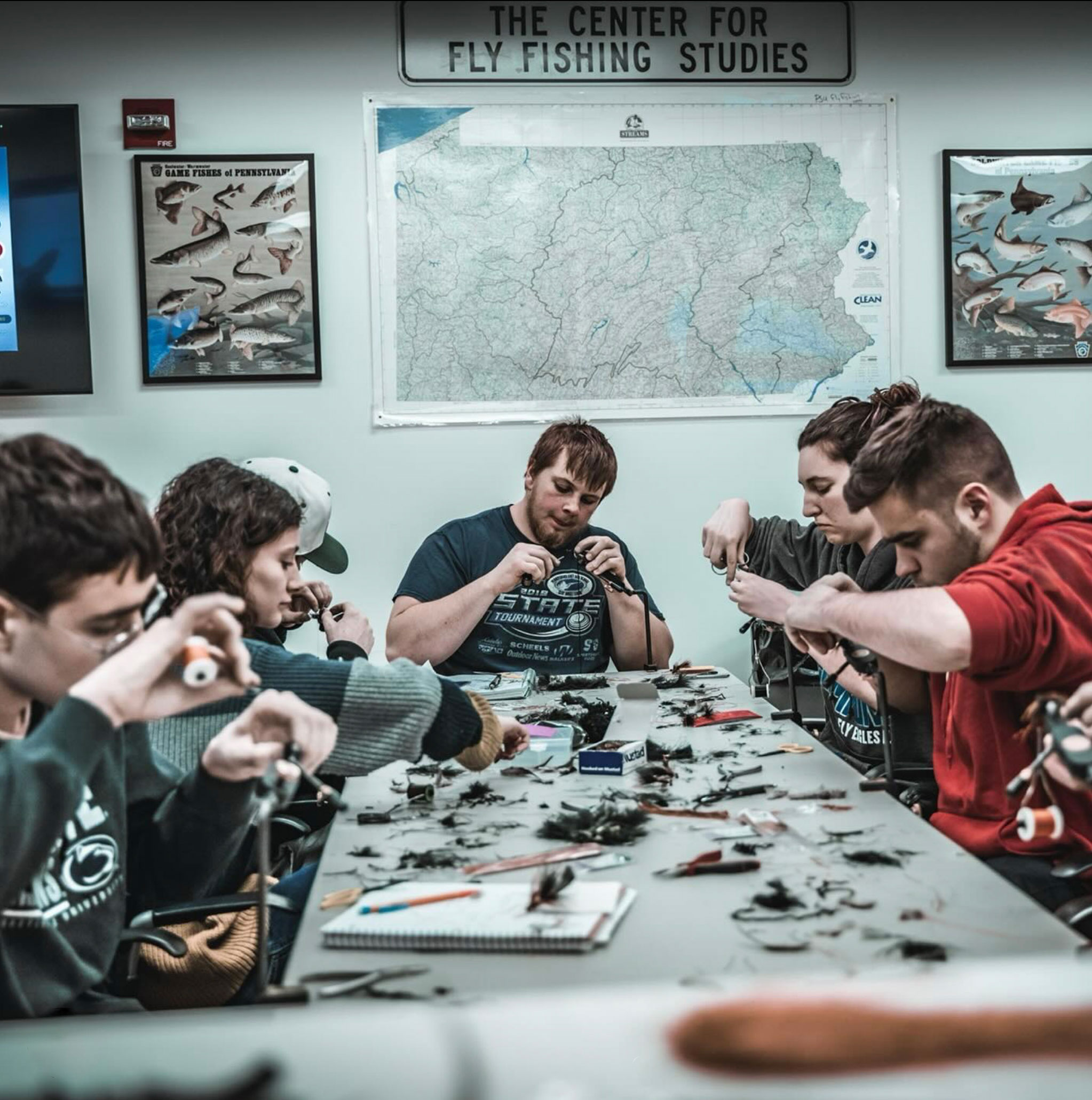
“I see students having to compete really hard to get into places like Penn State. There’s a lot of pressure on them,” he says. “But this is an environment where the results are more tangible, and they don’t sense that same sort of pressure.”
Next session, they might iterate Walt’s Worm into a more recent variation, this one featuring flashier tinsel, a band of color, and a weighted bead. Another angler updated the pattern for competition on Team USA. In keeping with the truth that flies catch anglers at the fly shop before they catch fish, the new, snazzier pattern is named Sexy Walt’s Worm.
The classroom-as-fly-factory is focused, with students deep in what amounts to a fine craft project. All pretense of fly-fishing as a macho activity ends at the vise when tying flies, where deft fingers, bobbins of thread, and bags of feathers—as well as the likelihood of an emergency run to Michael’s—reveal the creativity and care at the heart of the sport.
For former Nittany Lion soccer captain Ally Schlegel ’22 Bus, now playing professionally for the Chicago Red Stars of the NWSL, the program offered an escape from her hectic schedule. “It allowed me to find a hobby outside of soccer, school, and extracurriculars,” Schlegel says. “It was something I looked forward to every week, knowing that I was either going to be able to lose myself in tying flies, or be in a complete flow state on the river.”
Growing awareness of the mental health benefits of fly-fishing has coincided with growing support for the program. In 2022, an anonymous gift created a $250,000 endowment for the program, which was renamed the Joe Humphreys Fly Fishing Program to recognize Humphreys’ indelible impact. Priorities for the gift include technology updates to digitize course offerings, bringing in guest experts, and subsidizing transportation to streams farther afield. The gift will also support recruitment events for the Jesse Arnelle Initiative and an alumni directory.
“George is the perfect person to lead, innovate, and expand our fly-fishing programming with the goal of exposing greater numbers of underrepresented groups to the sport,” Nancy Williams, professor and then-head of the kinesiology department, said when the gift was announced.
Today, the fly-fishing curriculum is anchored by two courses: the beginner section, and the more advanced Mastery of Fly Fishing. The Jesse Arnelle Initiative is another course offering, an abbreviated beginner course aimed at underrepresented students. The program’s evolution comes at a time of greater understanding of how impactful fly-fishing can be—both as science and spirit-enhancement. Whether it’s the restoration of waterways—healthier rivers mean more and healthier fish—or the benefits of outdoor recreation, modern fly-fishing has more to offer than just catching fish.
“There’s an academic side to this, (and) people are now appreciating that to a greater extent,” Bartholomew says. He cites the pathways that fly-fishing offers curious learners into fields ranging from aquatic entomology, fish biology, and ecology to kinesthetics and sports psychology. “Understanding the science that underlies [fly-fishing] allows you to then evaluate other places,” Bartholomew says. “It’s really a doorway to richness.”
The program has also been a doorway to unlocking academic understanding of fly-fishing’s benefits on participants. Jennifer Agans, an associate professor in the department of recreation, park, and tourism management, is part of a team of faculty and students from the College of Health and Human Development studying program participants to understand how they’ve benefited from fly-fishing activities.
The first study, currently under review prior to publication, looks at how the program supports student well-being and builds healthy recreation habits amidst the stresses of student life. The second, nearing submission, seeks to bolster established literature around “connection to nature” and positive connections to their environment and community that students experience in the course.
“[The program] sits in the intersection of education and recreation,” Agans says. “It’s a for-credit class, which helps students make time to participate, and we have the opportunity to observe the impact.”
Agans says the mix of required motor skills—gross, for casting the rod, and fine, for fly-tying—makes for interesting study. Students “described both elements as supportive of their well-being, helping them ‘slow life down’ and ‘learn how to … just be with myself.’”
Hang out long enough with fly-fishing educators and you’ll hear a crucial term: lifelong activity. George relays the central concept as, “You can’t learn it all in a year, but you can learn pretty much all of it in your lifetime.”
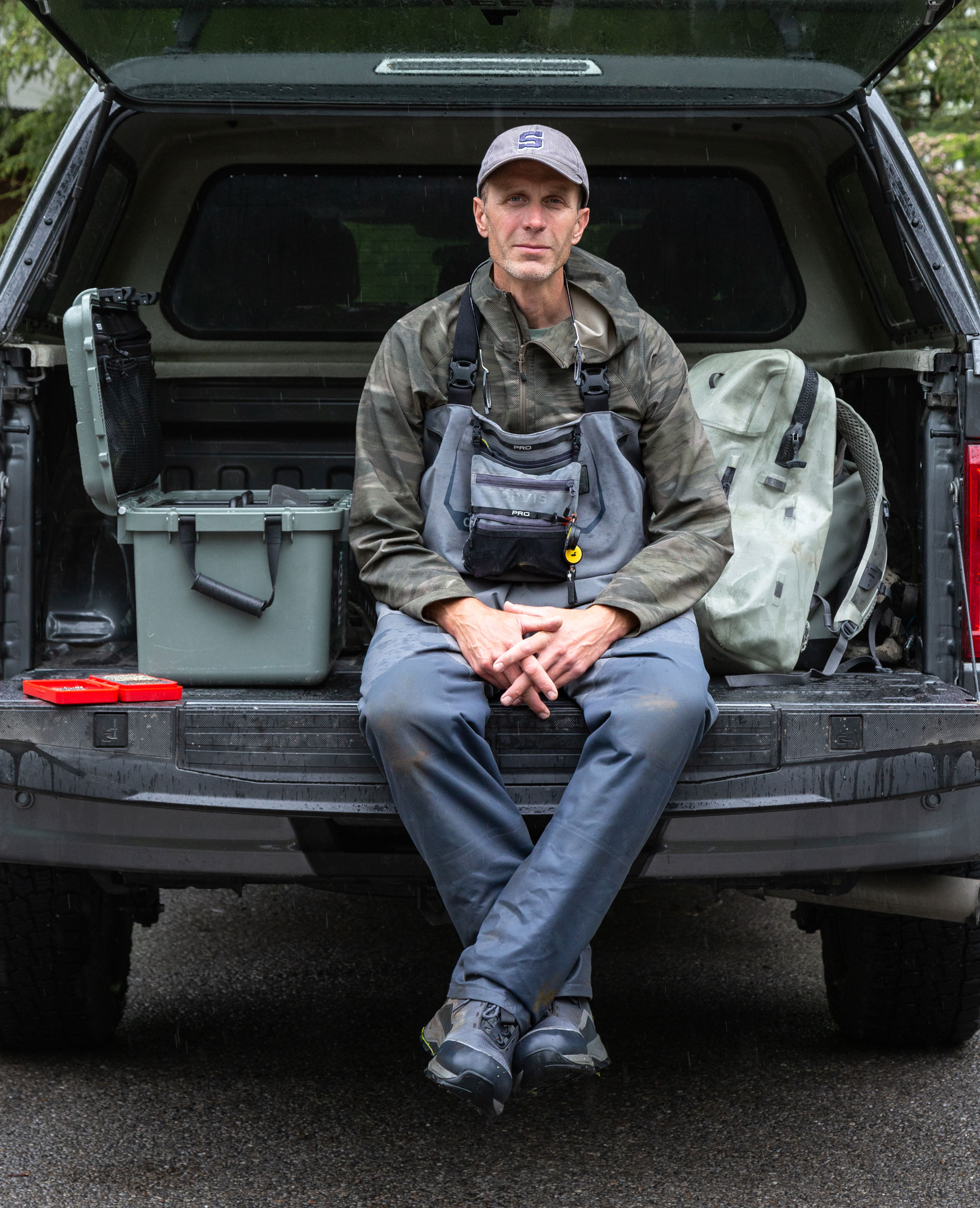
Fly-fishing doesn’t introduce much wear and tear to the body. It doesn’t require special adjustment as you age. For the most part, the biggest physical challenge is hiking around outdoors in the weather and wading in moving water. That makes it ideal as a pursuit to grow across cities or states, across careers, and across life stages. Key to the program at Penn State is setting students up to continue their fly-fishing path beyond the limestone creeks of Central Pennsylvania.
“There are certain alumni, when you talk to them, this is the favorite experience that they had at Penn State,” Bartholomew says. “And it is really shifting how they engage with nature and in recreation throughout their life.”
That progression is evident while they’re on campus. Engaged beginners move onto the advanced course; advanced course students work with guides from the community, and then spend several field trips guiding students in the Arnelle Initiative. Students may take further steps, joining the Penn State Fly Fishing Club or volunteering with the Spring Creek Trout Unlimited chapter on habitat-restoration projects. Fly-fishing industry representatives occasionally drop into class to describe the sorts of careers available, from engineering and R&D positions at rod manufacturers to marketing gigs in the outdoor industry for business students. While many have their futures figured out, Daniel wants them to see they don’t always have to follow the traditional path.
Later last November, Daniel was speaking at the Spring Creek Trout Unlimited general meeting. Club members and students filled the room, and George leaned into his latest heresy: monofilament fishing line.
Fly anglers traditionally use big, chunky PVC lines to propel their flies. “Gear anglers” favor thin lines to cast weighted lures. But Daniel, still eager to buck tradition, has been using the tools of the devil, as they’re sometimes called. He was talking in-depth about a recent article he wrote for Fly Fisherman magazine, “The Devil Fishes Mono,” describing the benefits of monofilament lines: enhanced control, and the ability to get flies deeper and faster into the areas where trout lurk.
This is a key insight from Daniel’s latest book, Fly Fishing Evolution. It’s a departure from his in-depth technical breakdowns of nymphing and streamer fishing in previous books, focusing on simplified systems and strong fundamentals. Daniel says teaching at Penn State has helped catalyze his goals away from prescribing fishing approaches, towards setting up anglers to assess on their own, and decide their approach using an array of skills.
“As long as you give students a handful of the basic tools—on reading water, on fly casting and presentation—you can let them decide what direction they want to go,” he says. This approach empowers subjective decision-making from a place of understanding rather than repetition.
If all this sounds a bit like overthinking something as simple as fishing, well, it’s not. The desire to exert control in a dynamic ecological environment has for years been about more, and better, technology. Now, anglers like Daniel are prioritizing connection and analysis: looking, listening, and applying what you’ve learned. “George represents a change in perspective,” Bruggeman says. “He has a very open mind, which I think is great for the sport.”
Daniel’s personal streamlining continues. He’s slimmed down his fly-tying materials to just a few boxes. He’s taking more photographs, developing his artistic skills. “For years, I was teaching and writing just for fly-fishing nerds, people who were already really good,” Daniel says. “But it’s awesome when you see a student catch their fish for the first time. You can see them literally fall in love with fishing.”
Somewhere nearby there’s a new angler dreaming of rivers, feeling the powerful pull of the waters around central Pennsylvania, another destiny emerging through limestone to replenish the stream.
Nick Parish is a writer and angler living in Portland, Oregon.